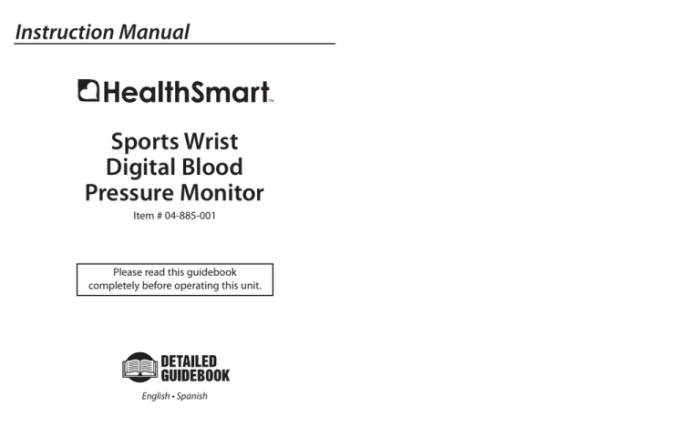Chapter 16.7 measuring and recording blood pressure – Chapter 16.7: Measuring and Recording Blood Pressure delves into the crucial aspects of monitoring and documenting blood pressure. This comprehensive guide provides a thorough understanding of the significance, methods, and factors influencing blood pressure measurements. By exploring the intricacies of hypertension and hypotension, it empowers healthcare professionals with the knowledge to effectively manage blood pressure-related conditions.
Blood pressure, a vital indicator of cardiovascular health, is influenced by various factors, including age, lifestyle, and underlying medical conditions. Understanding these factors enables clinicians to make informed decisions regarding patient care and implement appropriate interventions. This chapter serves as an invaluable resource for healthcare professionals seeking to enhance their knowledge and skills in blood pressure management.
Measuring Blood Pressure

Measuring blood pressure is an essential component of physical examination. It provides valuable information about the patient’s cardiovascular health and can help identify potential health problems. There are different methods for measuring blood pressure, including auscultation, oscillometry, and tonometry.
Measuring Blood Pressure Using a Sphygmomanometer
Auscultation is the most common method for measuring blood pressure. It involves using a sphygmomanometer, which consists of an inflatable cuff, a pressure gauge, and a stethoscope. The cuff is placed around the patient’s upper arm and inflated until the brachial artery is occluded.
The pressure in the cuff is then slowly released while listening for Korotkoff sounds through the stethoscope. The first Korotkoff sound indicates the systolic blood pressure, and the fifth Korotkoff sound indicates the diastolic blood pressure.
Recording Blood Pressure

Recording blood pressure readings is essential for tracking a patient’s cardiovascular health over time. It allows healthcare professionals to monitor changes in blood pressure and identify any potential problems. There are different methods for recording blood pressure readings, including written records, electronic health records, and mobile applications.
Recording Blood Pressure Readings in a Patient Chart
Written records are a traditional method for recording blood pressure readings. They involve using a pen and paper to write down the patient’s blood pressure, pulse, and any other relevant information. Electronic health records (EHRs) are becoming increasingly common for recording blood pressure readings.
EHRs allow healthcare professionals to store and access patient information electronically, including blood pressure readings.
Factors Affecting Blood Pressure
Blood pressure can be affected by a variety of factors, including age, sex, race, body weight, physical activity, and stress. It is important to understand these factors and their impact on blood pressure readings in order to provide accurate and appropriate care.
Impact of Factors on Blood Pressure Readings
- Age: Blood pressure tends to increase with age.
- Sex: Men generally have higher blood pressure than women.
- Race: African Americans have a higher risk of developing high blood pressure than other racial groups.
- Body weight: Obesity is a major risk factor for high blood pressure.
- Physical activity: Regular physical activity can help to lower blood pressure.
- Stress: Stress can temporarily increase blood pressure.
Hypertension: Chapter 16.7 Measuring And Recording Blood Pressure
Hypertension, or high blood pressure, is a major risk factor for cardiovascular disease. It is defined as a blood pressure reading of 140/90 mmHg or higher.
Stages of Hypertension
- Stage 1 hypertension: 140-159/90-99 mmHg
- Stage 2 hypertension: 160-179/100-109 mmHg
- Stage 3 hypertension: 180/110 mmHg or higher
Risks Associated with Hypertension
- Heart attack
- Stroke
- Kidney failure
- Eye damage
Hypotension

Hypotension, or low blood pressure, is defined as a blood pressure reading of 90/60 mmHg or lower. It can be caused by a variety of factors, including dehydration, blood loss, and certain medications.
Stages of Hypotension
- Mild hypotension: 90-100/60-70 mmHg
- Moderate hypotension: 80-90/50-60 mmHg
- Severe hypotension: below 80/50 mmHg
Risks Associated with Hypotension, Chapter 16.7 measuring and recording blood pressure
- Dizziness
- Lightheadedness
- Fainting
- Shock
Blood Pressure Medications

There are a variety of medications available to treat high blood pressure. These medications work by different mechanisms of action, including reducing the heart rate, dilating blood vessels, and reducing the amount of fluid in the body.
Types of Blood Pressure Medications
- ACE inhibitors
- Angiotensin II receptor blockers
- Beta-blockers
- Calcium channel blockers
- Diuretics
Patient Education
Patient education is an essential component of blood pressure management. It is important to teach patients about blood pressure measurement and recording, as well as the importance of lifestyle modifications for blood pressure management.
Importance of Lifestyle Modifications for Blood Pressure Management
- Maintaining a healthy weight
- Eating a healthy diet
- Getting regular exercise
- Reducing stress
- Limiting alcohol intake
- Quitting smoking
FAQ Insights
What is the importance of measuring blood pressure?
Blood pressure measurement is crucial for assessing cardiovascular health, detecting hypertension and hypotension, and monitoring the effectiveness of treatment interventions.
What are the different methods for measuring blood pressure?
Blood pressure can be measured using various methods, including the auscultatory method with a sphygmomanometer, the oscillometric method with an automated device, and the intra-arterial method for continuous monitoring.
How do I record blood pressure readings accurately?
Accurate blood pressure recording involves using the correct technique, ensuring proper patient positioning, and documenting the readings clearly and legibly in the patient’s chart.